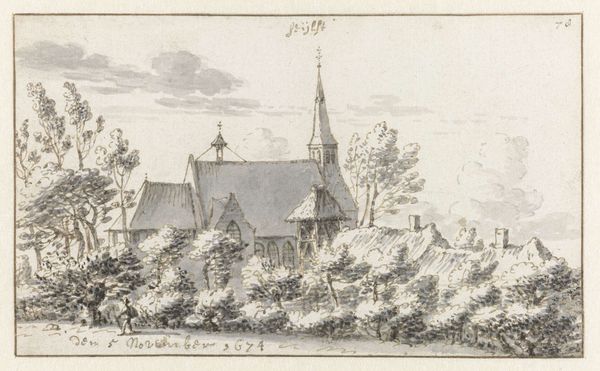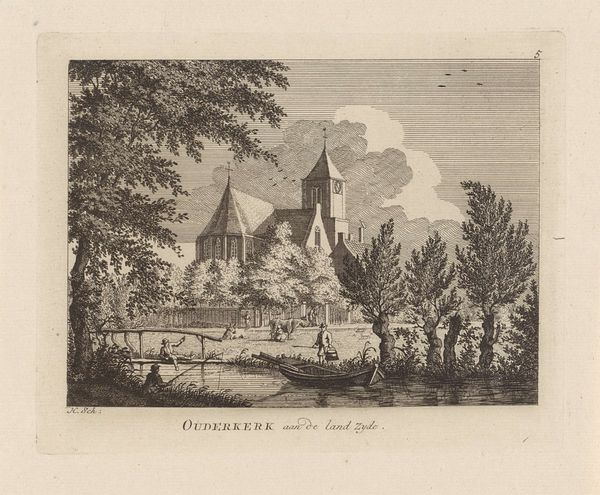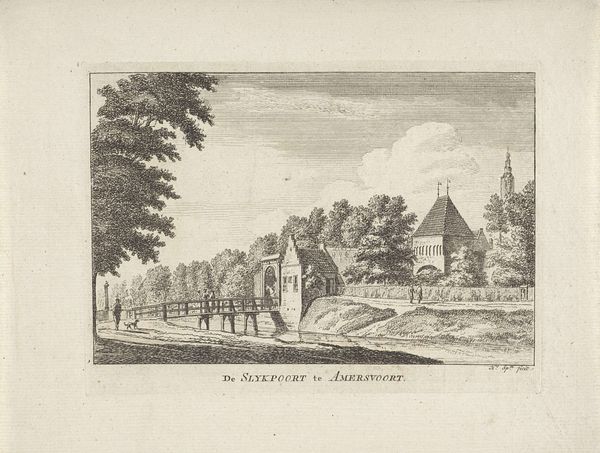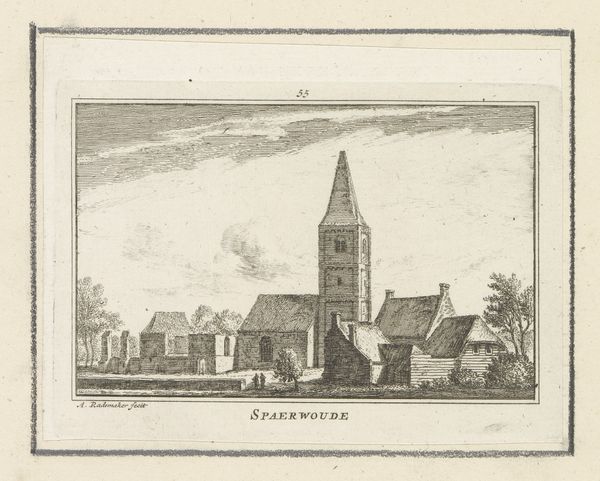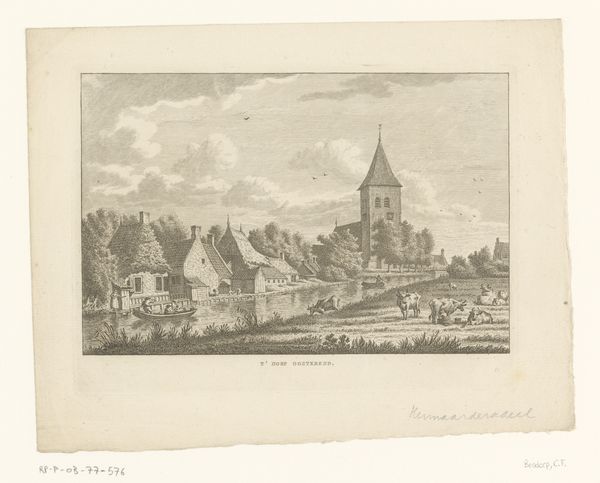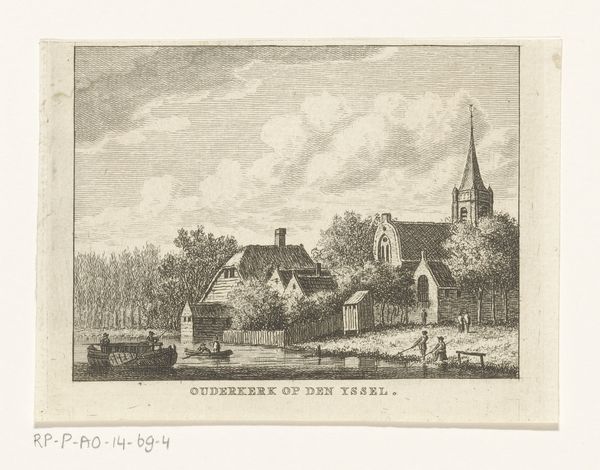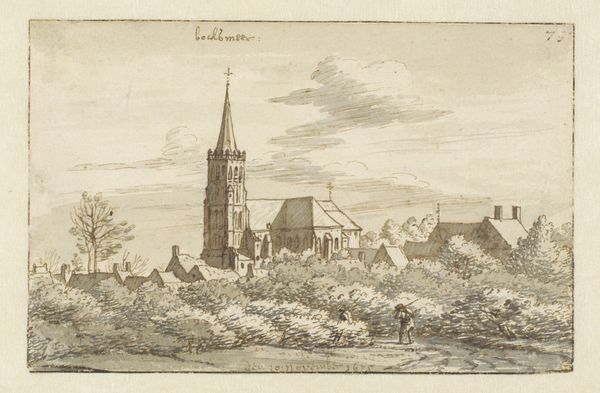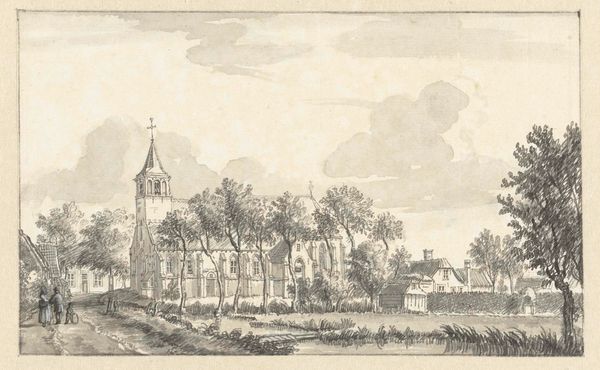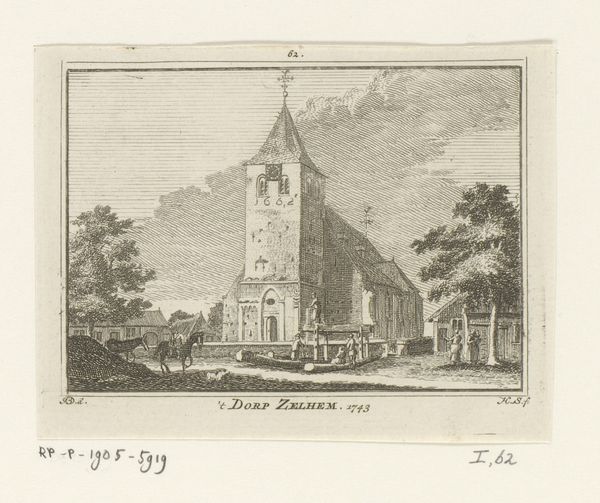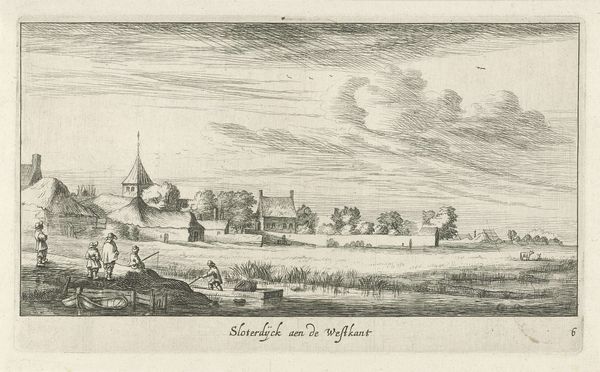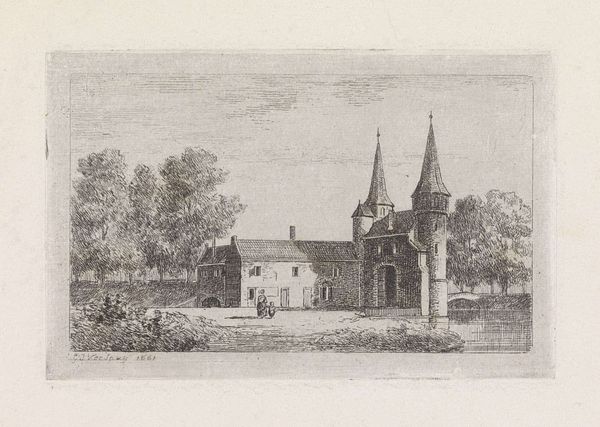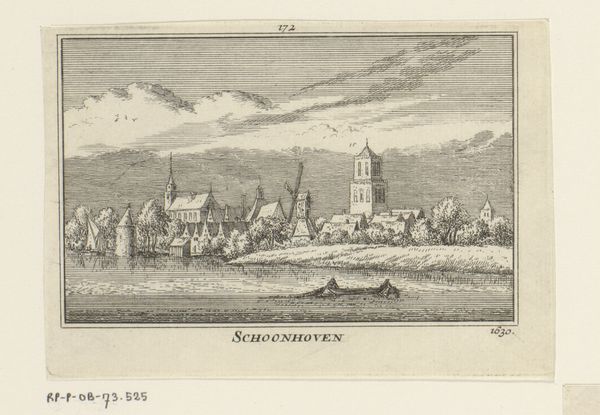
print, engraving
#
baroque
# print
#
old engraving style
#
landscape
#
personal sketchbook
#
cityscape
#
engraving
Dimensions: height 80 mm, width 115 mm
Copyright: Rijks Museum: Open Domain
This print of the Sint-Willibrorduskerk in Klein-Zundert was made by Abraham Rademaker in the early 18th century. Rademaker trained as a painter, but he is best known for his prints, which often feature landscapes and buildings. Rademaker made his prints using a technique called etching, where a metal plate is coated with a waxy substance, and then scratched with a needle to expose the metal. The plate is then immersed in acid, which bites into the exposed lines, and is then inked and printed onto paper. The appeal of this method lay in its relative ease, and its capacity to achieve very fine detail. Notice how Rademaker has used the etching technique to capture the texture of the thatched roofs, and the intricate details of the church's architecture. Prints like this one were relatively inexpensive to produce, and could be sold to a wide audience. So while we might think of them as being quite distant from us today, in fact they represent a very early form of mass media. Rademaker’s work reminds us that even seemingly simple images can have a deep connection to labor, technology, and the culture of their time.
Comments
No comments
Be the first to comment and join the conversation on the ultimate creative platform.
